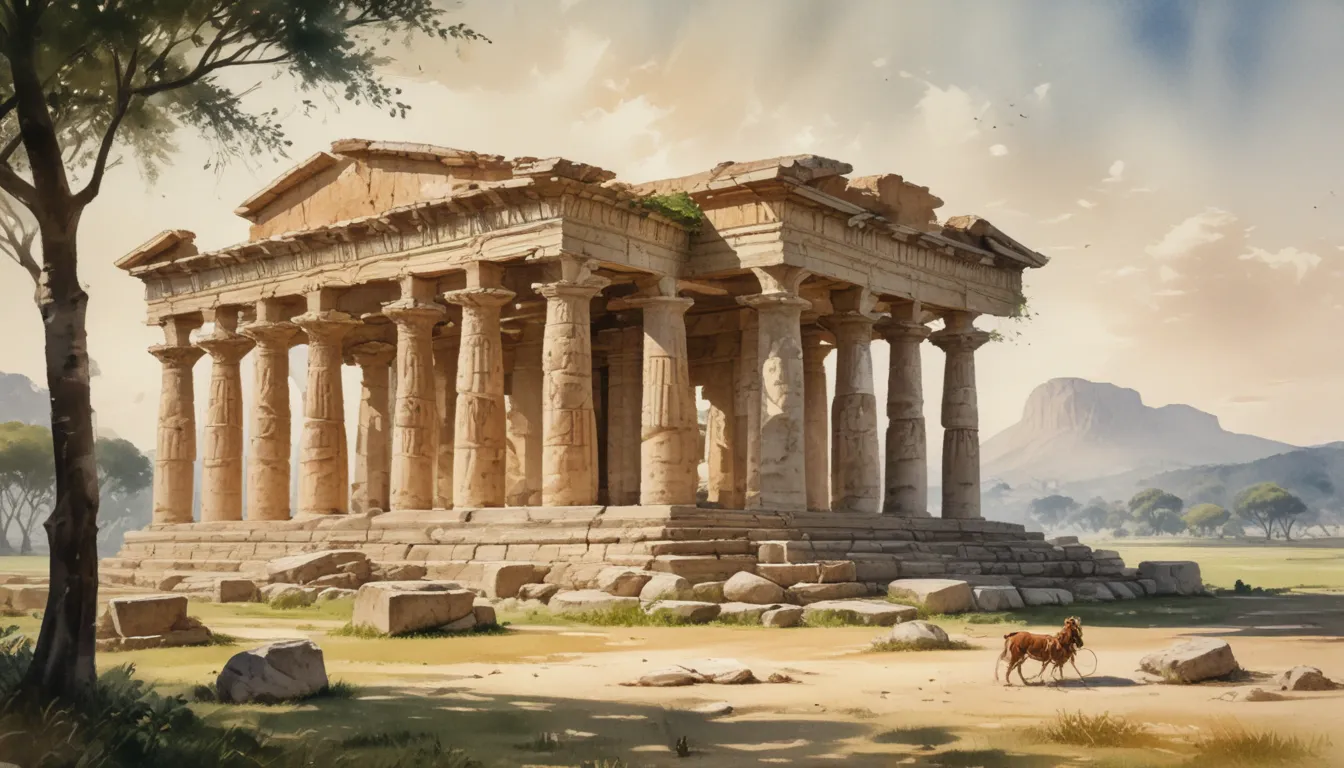The images in our articles are for illustrative purposes only and may not exactly match the content. They are intended to capture your interest and complement the text, not to replace it.
Welcome to the captivating world of Paestum, a hidden gem nestled in southern Italy’s picturesque countryside. With its awe-inspiring Greek temples, rich cultural heritage, and fascinating history, Paestum offers a unique glimpse into the ancient world. Whether you’re a history enthusiast or a curious traveler, this archaeological site is sure to enchant you with its stories waiting to be discovered. In this article, we will delve into nine intriguing facts about Paestum that will deepen your appreciation for this incredible landmark.
The Origins of Paestum
Paestum, originally known as Poseidonia, was founded by the ancient Greeks around 600 BC. Named after the Greek god of the sea, Poseidon, the city later became Roman and was renamed Paestum in the 4th century BC.
The Well-Preserved Greek Temples
One of Paestum’s highlights is its remarkably well-preserved Greek temples, dating back to the 6th and 5th centuries BC. The three main temples dedicated to Hera, Athena, and Poseidon showcase the unique Doric style and are considered some of the best-preserved examples in the world.
The Mystery of the Tomb of the Diver
Paestum is home to the famous Tomb of the Diver, adorned with the only known example of Greek wall painting from the 5th century BC. Discovered in 1968, this tomb depicts a young man diving into the water, symbolizing the transition from life to death and offering insights into ancient Greek funerary practices.
Paestum’s Unusual Defensive Walls
Unlike most ancient cities, Paestum boasts Cyclopean walls made of large limestone blocks without mortar. This architectural marvel showcases advanced construction techniques and has contributed to the city’s preservation over the centuries.
The Frescoes of the Temple of Athena
The Temple of Athena in Paestum features impressive frescoes depicting mythological scenes. These beautifully painted artworks offer a window into ancient Greek religious and cultural practices, showcasing the artistic skills of the era.
The Importance of Paestum’s Agricultural Past
Paestum played a significant role in the agricultural industry, with its fertile plains ideal for cultivation. The region was known for producing olives, grapes, and other agricultural products, reflected in the artifacts exhibited in Paestum’s museum.
Paestum’s Inclusion in UNESCO World Heritage List
In 1998, Paestum was designated a UNESCO World Heritage Site, recognizing its historical and cultural significance and the integration of Greek and Roman civilizations. It serves as a unique window into the ancient world.
The Beauty of Paestum’s Natural Surroundings
Paestum’s natural beauty, nestled amidst lush green fields and scenic landscapes, enhances its allure. The combination of archaeological wonders and picturesque surroundings makes Paestum a must-visit destination for nature lovers.
The Rich Cultural Heritage of Paestum
Beyond its ancient ruins, Paestum boasts a rich cultural and artistic heritage. The city hosts various cultural events throughout the year, including music festivals, theatrical performances, and art exhibitions, celebrating its vibrant history and traditions.
Conclusion
Paestum offers a blend of rich history, stunning architecture, and natural beauty, creating a truly immersive experience for visitors. Whether you’re drawn to history, architecture, or seeking a unique travel experience, Paestum holds something special for everyone. Explore the wonders of this remarkable destination and savor the captivating stories it has to tell.
FAQs
- When was Paestum founded?
-
Paestum was founded around 600 BC by Greek colonists from the city of Sybaris.
-
How many temples are there in Paestum?
-
Paestum is home to three well-preserved Greek temples: the Temple of Hera, the Temple of Poseidon, and the Temple of Athena.
-
Can I visit the interior of the temples?
-
Visitors are not allowed to enter the interior of the temples due to preservation efforts. However, you can admire the impressive exterior architecture.
-
Are guided tours available in Paestum?
-
Yes, guided tours are available in Paestum, offering insightful information about the history, architecture, and significance of the landmarks.
-
Are there any other attractions in Paestum besides the temples?
-
Apart from the temples, Paestum is also home to the Paestum Archaeological Museum, showcasing artifacts from the ancient Greek and Roman periods.
-
Can I reach Paestum by public transportation?
-
Yes, Paestum is well-connected by train and bus services, with regular routes from major cities in Italy.
-
Is there accommodation available near Paestum?
-
Accommodation options near Paestum range from boutique hotels to beachfront resorts, offering a comfortable stay for visitors.
-
What is the best time of year to visit Paestum?
-
The best times to visit Paestum are during the spring (April to June) and fall (September to October), when the weather is mild and pleasant.
-
Can I rent a bicycle to explore Paestum?
- Bicycle rentals are available in Paestum, allowing visitors to explore the landmarks and surrounding countryside at their own pace.
Embark on an ancient journey to Paestum, where history, art, and nature intertwine to create an unforgettable experience. Immerse yourself in the wonders of this remarkable archaeological site and uncover the captivating stories that have shaped its legacy. Whether you’re a curious traveler or a history enthusiast, Paestum invites you to explore its treasures and discover the magic of the ancient world. Plan your visit today and let the enchanting spirit of Paestum guide you on a journey through time and culture.






